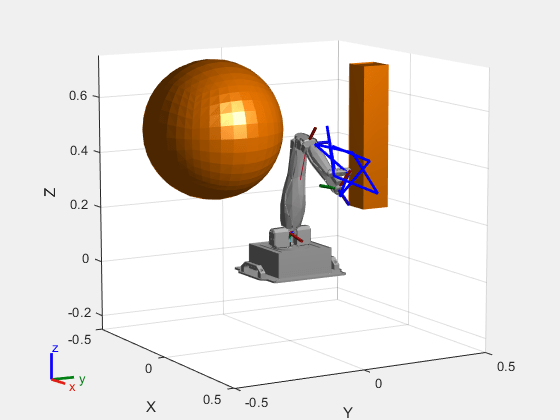manipulatorStateSpace
Description
The manipulatorStateSpace object represents the joint configuration
state space of a rigid body tree robot model. For a given rigidBodyTree object, the nonfixed joints in the rigid body tree model form the
state space. When sampling the state or specifying bounds, the values of the state vector
correspond to joint positions that define a joint configuration with
dimension equal to the NumStateVariables property.
Typically, the manipulator state space works with sampling-based path planners like the
plannerRRT (Navigation Toolbox) and plannerBiRRT (Navigation Toolbox) objects.
To sample and validate paths for manipulators, combine the state space with a state validator
manipulatorCollisionBodyValidator object. Because the
manipulatorStateSpace object derives from the nav.StateSpace (Navigation Toolbox) class,
and is specified in the StateSpace property of the path planners.
To plan paths for manipulators using only Robotics System Toolbox™, see the manipulatorRRT
object.
Creation
Syntax
Description
manipSS = manipulatorStateSpace
manipSS = manipulatorStateSpace(robot)rigidBodyTree object, robot.
manipSS = manipulatorStateSpace(robot,numStateVariables)
Properties
Object Functions
distance | Distance between states |
enforceStateBounds | Limit state to state space bounds |
sampleUniform | Sample state using uniform distribution |
sampleGaussian | Sample state using Gaussian distribution |
interpolate | Interpolate between states |
Examples
Extended Capabilities
Version History
Introduced in R2021b


